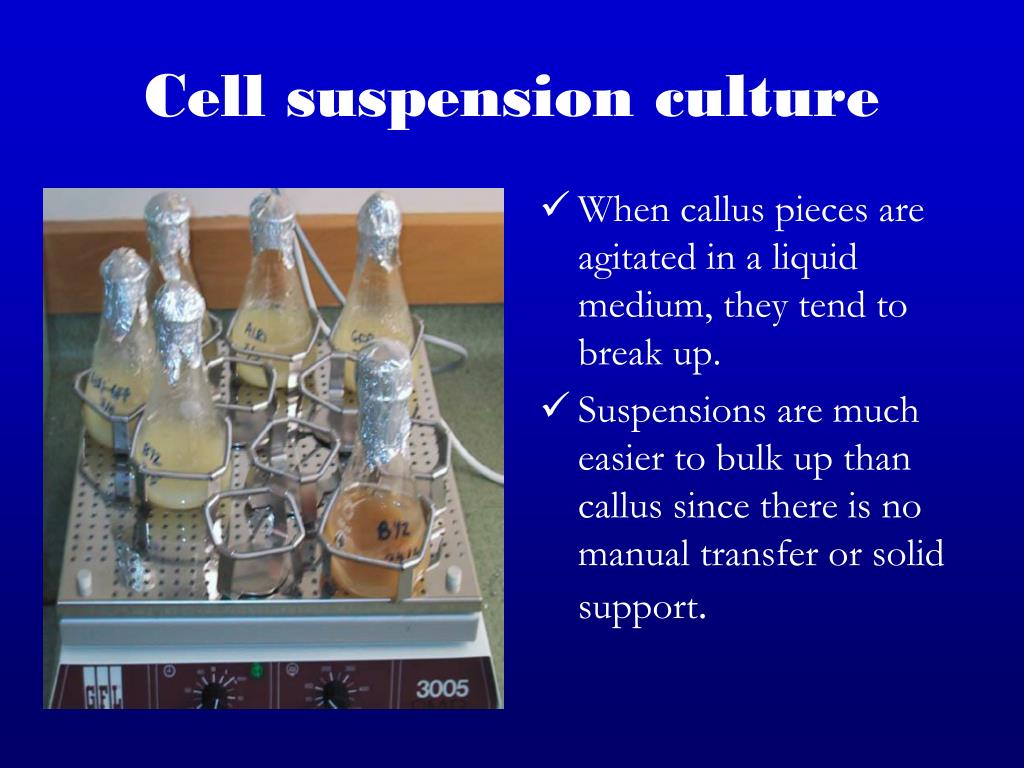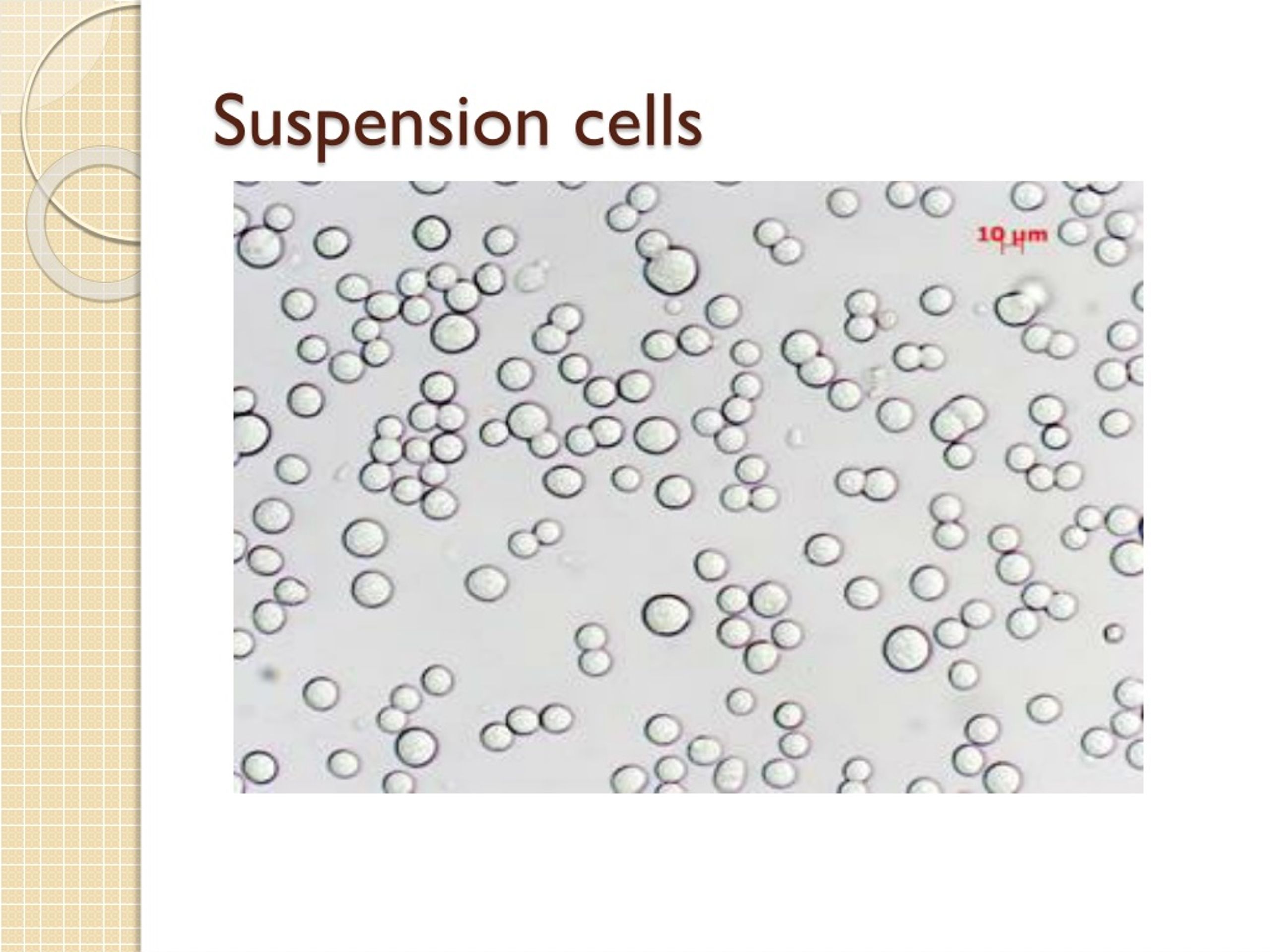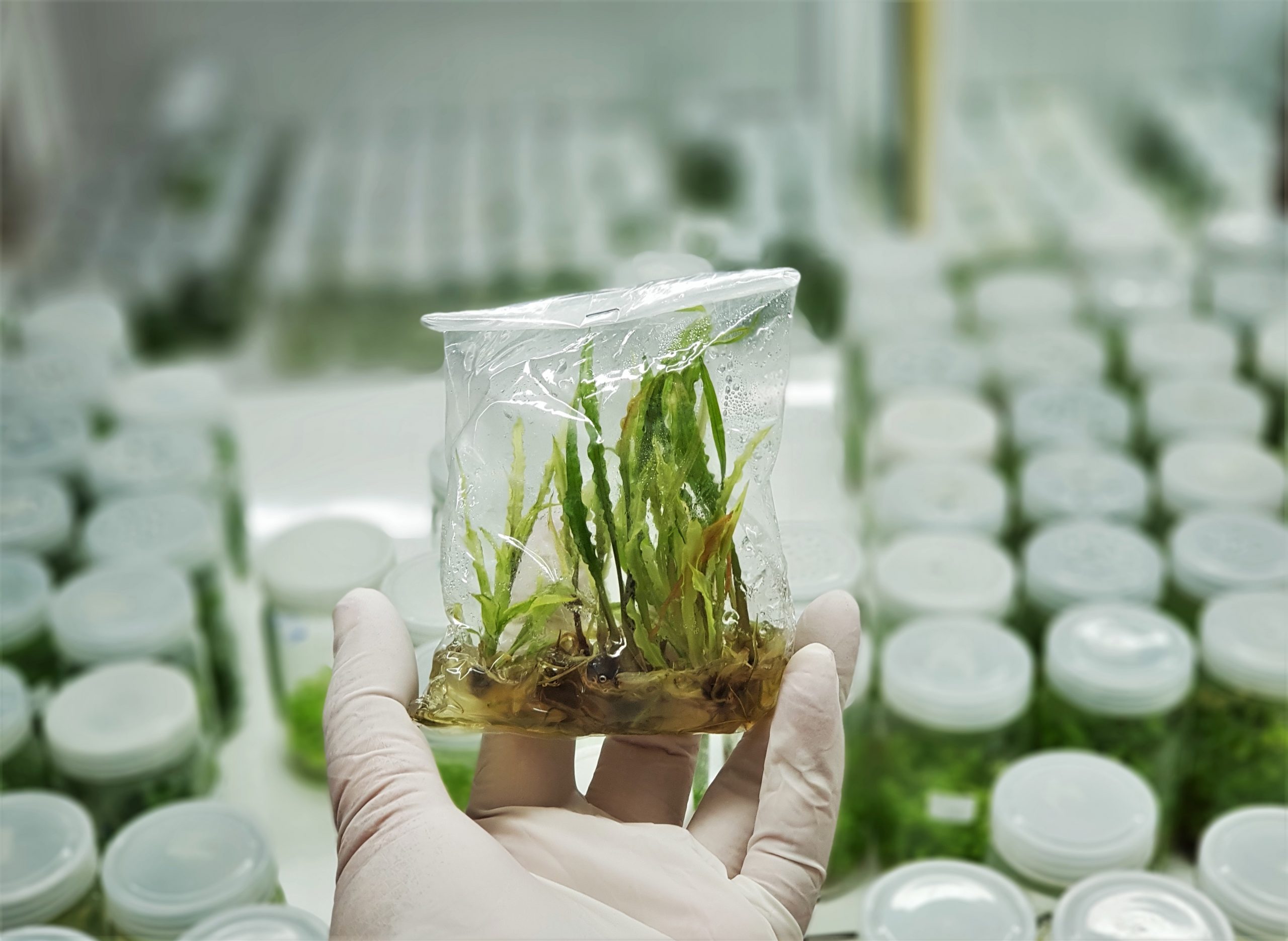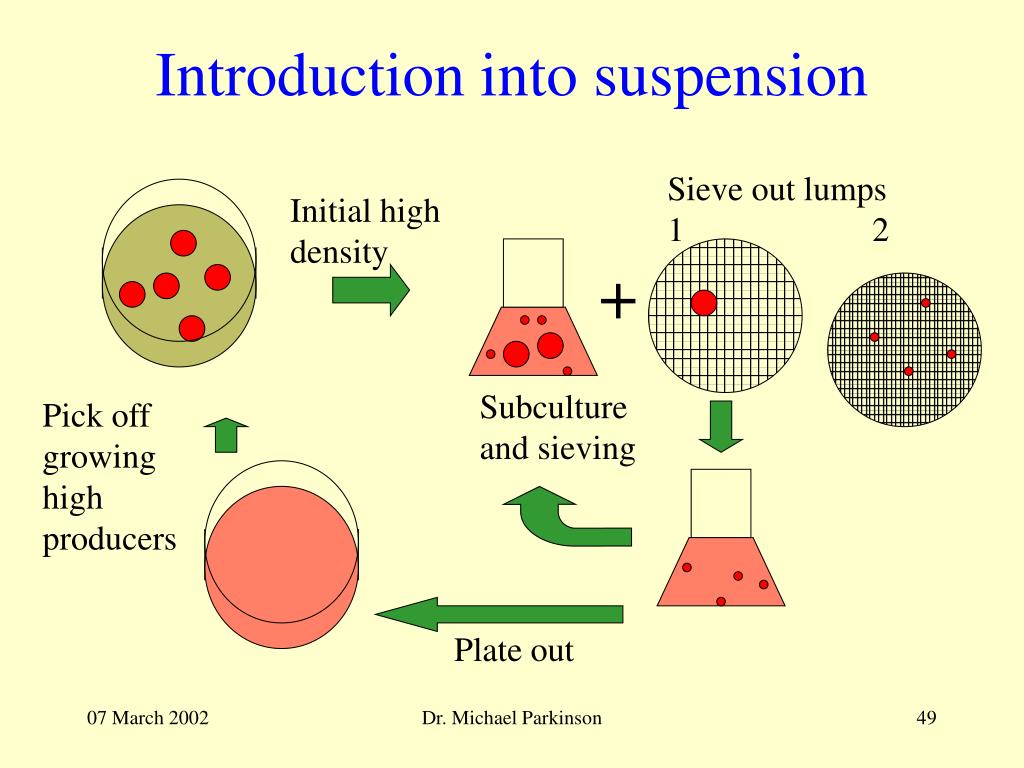
Animal Cell Suspension Culture Slideshare Cell suspension culture Principles of cell culture
The cell suspension cultures established both from the root- and leaf-derived calli contained a high proportion of stem cells (92-93% and 72-73%, respectively). The most effective combination.

All About Plant Cell Suspension Cultures What Is It and How to Establish It GoldBio
Stirred culture • The cell suspension inside the vessel is kept dispersed continuously by bubbling sterile air through culture medium. • The use of an internal magnetic stirrer is the most convenient way to agitate the culture medium safely. • Magnetic stirrer revolves at 200-600 rpm..

PPT Cell Types, Culture Characteristics, Tissue Culture PowerPoint Presentation ID1400381
Definition: Suspension culture is a type of culture in which single cells or small aggregates of cells multiply while suspended in agitated liquid medium. It is also referred to as cell culture or cell suspension culture. Principle: Callus proliferates as an unorganised mass of cells.

Cell suspension culture
Initiation of plant cell suspension culture. Plant cells are totipotent, which means that, in principle, every cell contains all genetic information to grow a new plant. Plant cell and tissue.

PPT Plant Tissue Culture PowerPoint Presentation, free download ID6903841
The majority of the cells derived from vertebrates, with the exception of hematopoietic cell lines and a few others, are anchorage-dependent and have to be cultured on a suitable substrate that is specifically treated to allow cell adhesion and spreading (i.e., tissue-culture treated).However, many cell lines can also be adapted for suspension culture.

Cell suspension culture an overview Lab Associates
Basic Cell Culture An Introduction to Growing and Maintaining Mammalian Cells in Culture Introduction Established in the early 1900s Further developed during the 1940s and 1950s to support virology research and to provide a tool for producing virus for vaccines Used today for a wide variety of studies Model systems Understanding disease states

Cell suspension culture Cell suspension culture When callus
Introduction . . 1 Purpose of the Handbook . . .1 Introduction to Cell Culture . . . .2 What is Cell Culture? . 2 Finite vs Continuous Cell Line . . 2 Culture Conditions . . 2 Cryopreservation . . . 2 Morphology of Cells in Culture . . . 3 Applications of Cell Culture . . 3 Cell Culture Laboratory . . 4 Safety . .4 Biosafety Levels . . 4 SDS .

PPT Cell Culture PowerPoint Presentation, free download ID2198729
Cell Suspension Culture in Plants Sep 23, 2020 • 11 likes • 2,221 views A Biodiction : A Unit of Dr. Divya Sharma Assistant Professor at A Biodiction : A Unit of Dr. Divya Sharma Education Cell Suspension Culture - Plant Tissue Culture Batch Culture # Semicontinuous Culture # Continuous Culture Cell Suspension Culture in Plants 1 of 30 Save slide

Cell suspension culture Technique involved Notes Procedure Bioreactor Bio science
cell Suspension culture Sep 11, 2021 • 0 likes • 222 views Download Now Download to read offline Education Introduction, Discovered, Definition, Types of cell suspension cultures, Cell Suspension Culture, Advantages, Disadvantages Reference Read more A ASHOKKUMAR M M.Sc. Biotechnology at Student Follow Recommended

All About Plant Cell Suspension Cultures What Is It and How to Establish It GoldBio
Background This study aims to establish cell suspension culture, its maintenance and induction of somatic embryogenesis, and in vitro plant regeneration in Cenchrus ciliaris L. Suspension cultures are relatively homogenous cell lines facilitating uniform access to nutrition. These are ideal sources of competent cells for genetic transformation. Results Callus was initiated by culturing.

PPT Tissue Engineering PowerPoint Presentation, free download ID1826422
Plant Cell Suspension Cultures | Springer Nature Experiments Plant cell suspension cultures are widely used in plant biology as a convenient tool for the investigation of a wide range of phenomena, bypassing the structural.

Cell Suspension Culture
Cell culture 2. Animal cells grow either as an adherent monolayer or in suspension Adherent cells are anchorage-dependent and propagate as a monolayer attached to the cell culture vessel. Suspension cells can survive and proliferate without being attached to a substratum eg.

PPT BE304 Plant Cell culture PowerPoint Presentation, free download ID346072
CHO cells in suspension. A cell suspension or suspension culture is a type of cell culture in which single cells or small aggregates of cells are allowed to function and multiply in an agitated growth medium, thus forming a suspension.Suspension culture is one of the two classical types of cell culture, the other being adherent culture.The history of suspension cell culture closely aligns with.

PPT Cultivation of viruses PowerPoint Presentation, free download ID3000329
Expansion and evaluation of four iPSC lines expanded in 2D planar and 3D suspension cell culture. A Cell size following 3D suspension cluster dissociation and 2D cell passaging on days 0, 3, and 5 of expansion of three iPSC lines. B Absolute cell number expansion using 2D planar and 3D suspension cell culture of iPSC line 1, C iPSC line 2, D.

PPT BIOREACTOR SYSTEM (ERT 314) PowerPoint Presentation, free download ID2112175
Cell Suspension Culture Sep 15, 2018 • 54 likes • 17,223 views Report Share Download to read offline Science it is all about knowledge of cell suspension culture Amit Poddar B.sc biotecnology Recommended Cell suspension culture by Cell suspension culture Anushi Jain 100.6K views • 20 slides Cell suspension culture by

Cell Suspension Culture
Regular subculturing requires the removal of cell suspension and the addition of medium sufficient to dilute culture to the appropriate density (refer to the cell specific product insert). Adding fresh medium is sufficient to replenish cell nutrients. CO 2 exchange is not recommended for insect cell culture. Maintain insect cells at 27°C in a.